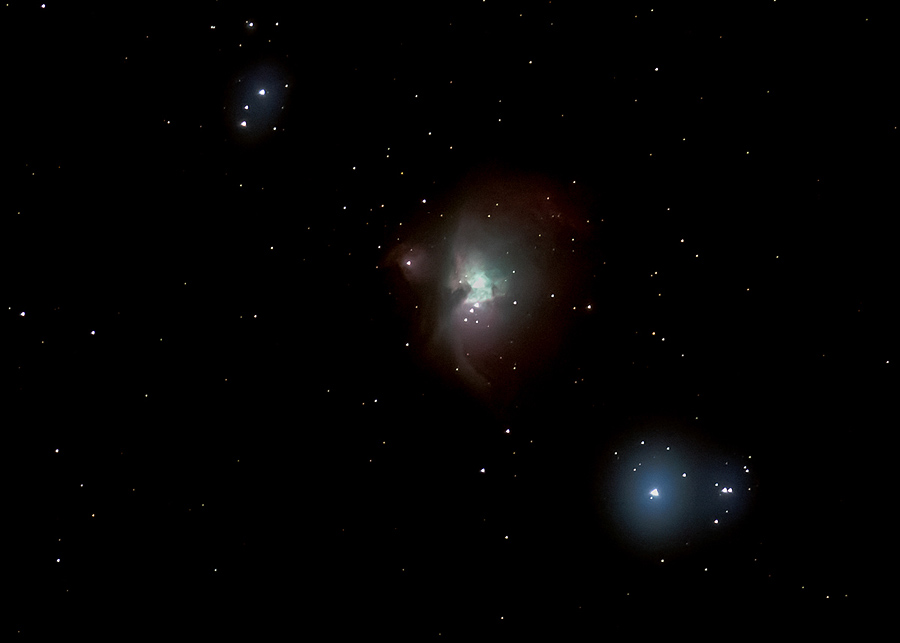The Orion Nebula
December 31, 2015
I copied the following from Wikipedia:
The Orion Nebula (also known as Messier 42, M42, or
NGC 1976) is a
diffuse nebula situated in the
Milky Way,
being south of
Orion's Belt in the
constellation of Orion.[b]
It is one of the brightest
nebulae, and
is visible to the
naked eye
in the night sky. M42 is located at a distance of 1,344 ±
20
light years[3][6]
and is the closest region of massive
star formation to Earth. The M42 nebula is estimated to be 24 light years
across. It has a mass of about 2000 times the mass of the Sun. Older texts
frequently refer to the Orion Nebula as the Great Nebula in Orion or the
Great Orion Nebula.[7]
The Orion Nebula is one of the most scrutinized and photographed objects in
the night sky, and is among the most intensely studied celestial features.[8]
The nebula has revealed much about the process of how
stars and
planetary
systems are formed from collapsing clouds of gas and dust. Astronomers have
directly observed
protoplanetary disks,
brown
dwarfs, intense and turbulent motions of the gas, and the
photo-ionizing effects of massive nearby stars in the nebula.

I would have had better results without the hazy sky. The constellation Orion
was fairly low in the
sky too, which results in having to shoot through more of the atmosphere,
although it makes it much
easier to line everything up than when shooting straight up!
The iOptron Skytracker worked very well, as always. This is a single 30 second
exposure, 300mm
focal length, ISO 1600, f5.6.
HOME
